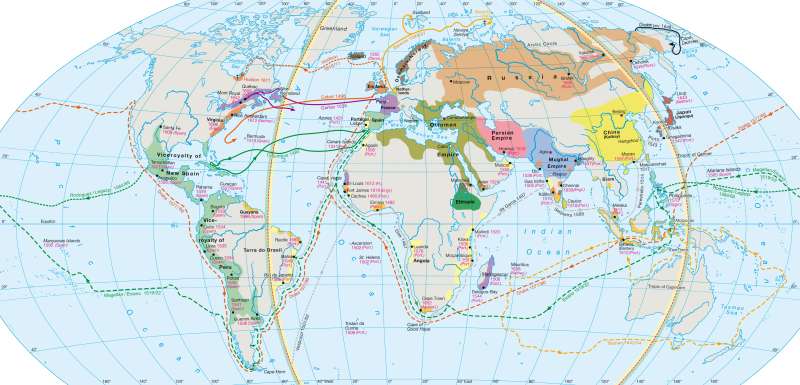Expeditions of discovery and colonial conquests (15th — 17th century)
The world - Geographic discoveries
978-3-14-100790-9 | Page 182 | Ill. 2

Information
Voyages of discovery and conquest have always been a fascinating subject for the classroom. The map is interdisciplinary, with history, geography and religion- dealing with the first phase of the Europeanisation of the earth.The most important voyages of the European powers from mid-15th Century to 17th Century are represented. A special and often neglected area is the advance of Russia into North Asia, which until now has been largely seen as a colonial policy of conquest. Aside from the most important voyages of discovery, the map includes the major metropolises of the 16th and 17th Centuries as well as other determining forces in Europe and Asia.
Expedition and Trade
One of the main ambitions of the discoveries was for commercial ends. With the rise of the Ottoman Empire, working-distance trade was interrupted between Europe and Asia seaports until the 15th Century. This resulted in large price increases mainly in the trading of spices.
The first initiatives for voyages of discovery came mainly from the Iberian powers, Spain and Portugal, while Italy and Germany had no impetus due to severe internal fragmentation.
Colonial Empires of the Mid-17th Century
By mid 17th Century, the following picture was presented: The Spaniards had colonies in Central and South America, English and French settled on the North American east coast. The Dutch were on the Indian Ocean through the legacy of the Portuguese and Russia captured a closed area of land in North Asia.
F. Forster; Ü: C. Fleming




